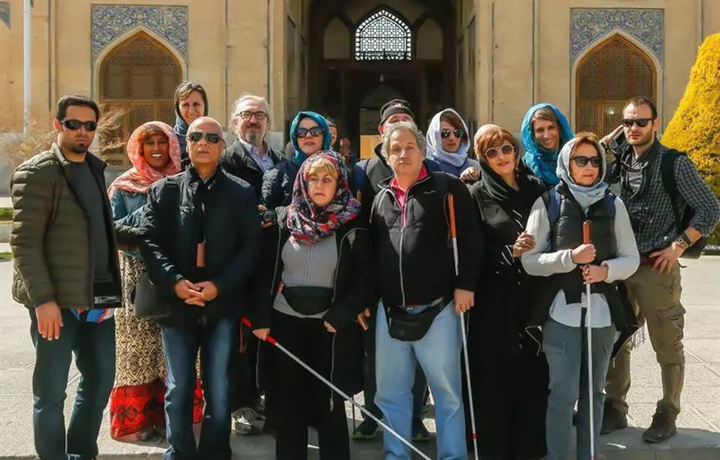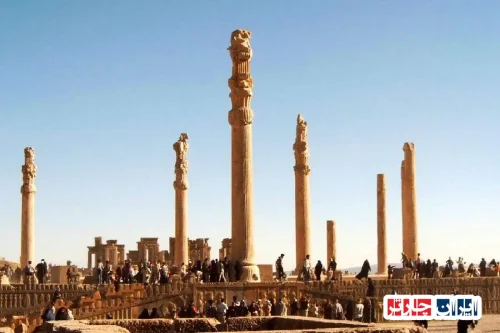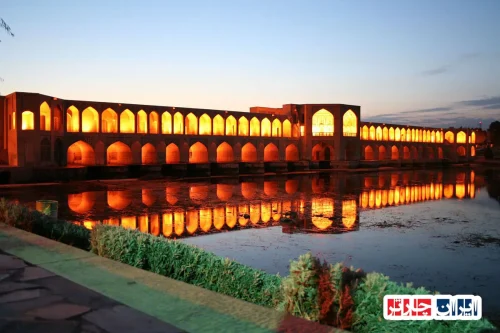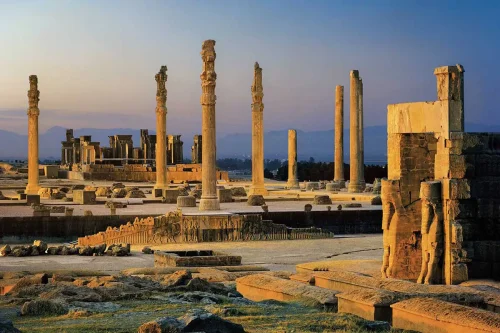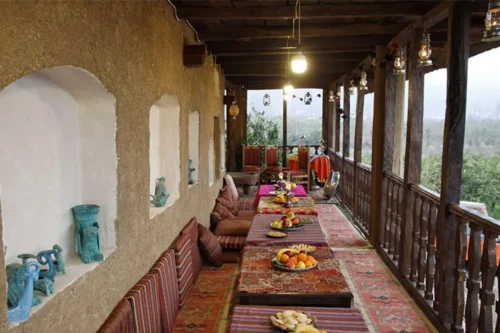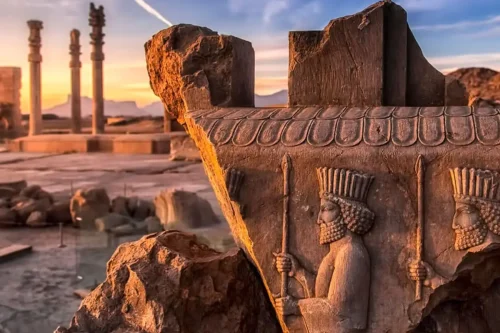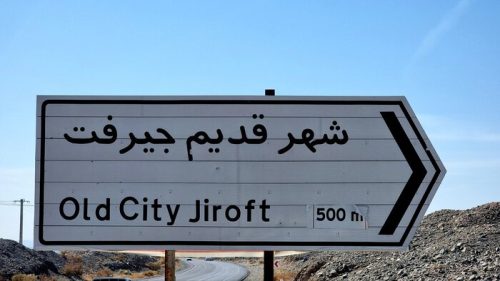News Source : https://www.mcth.ir/news/ctl/ArticleView/mid/508/articleId/64197/چه-اقداماتی-برای-تسهیل-گردشگری-نابینایان-انجام-شده-است؟-طراحی-سیستم-هوشمند-در-میراث-جهانی-کاخ-گلستان-و-موزه-ملی-ایران
What Measures Have Been Taken to Facilitate Tourism for the Blind? Designing Smart Systems at Golestan Palace and National Museum of Iran
Easy Accessibility in the Golestan Palace World Heritage Site
The Golestan Palace, as one of Iran’s world heritage sites, has made extensive efforts to improve accessibility for the visually impaired. The installation of tactile mosaics and audio guides provides visually impaired visitors with easier navigation and a better understanding of their surroundings. Additionally, the use of smart systems that offer necessary information audibly provides a unique experience for these visitors.
Utilizing Technology at the National Museum of Iran
The National Museum of Iran, by leveraging modern technologies, has offered facilities for visually impaired visitors. Smart systems with touch recognition and audio descriptions help visually impaired individuals enjoy the exhibitions and art pieces. Furthermore, the installation of Braille devices throughout the museum has facilitated access to information for those with visual impairments.
Educating and Raising Awareness for Visually Impaired Tourists
One of the key measures for facilitating visually impaired tourism is public education and awareness about the needs and rights of these individuals. Conducting training courses for museum and tourism center staff to improve the knowledge and skills necessary to provide services for the visually impaired is among these actions. Also, providing comprehensive and understandable information in audio and Braille formats plays an important role in enhancing the tourism experience for visually impaired visitors.
Enhancing Amenities for Visually Impaired Visitors
Facilitating visually impaired tourism necessitates the enhancement of amenities in tourist centers. Installing elevators with audio buttons, providing suitable rest areas, and creating easy access routes to various parts of museums and historical sites are among these measures. Furthermore, offering private and exclusive guide services to visually impaired individuals creates a more pleasant and unrestricted experience for them.
Designing Easy Access Routes
The design of easy and unobstructed access routes around the Golestan Palace and the National Museum of Iran is among the effective measures in facilitating visually impaired tourism. Using appropriate materials for pavements and paths, creating rest areas with elevators equipped with audio systems, and tactile supports are among such innovations that help the visually impaired visit these sites without worries about physical barriers.
Audio and Braille Systems in Historical Sites
The installation of audio and Braille systems in the Golestan Palace and the National Museum of Iran is another important measure in facilitating visually impaired tourism. These systems provide audio descriptions of historical and cultural artifacts, allowing the visually impaired to benefit from their hearing sense to enjoy the beauty and values of cultural heritage. Also, providing supplementary descriptions in Braille has improved information access for those with visual impairments.
International Collaborations in Facilitating Visually Impaired Tourism
Establishing international collaborations with organizations and specialized institutions in supporting visually impaired tourism plays a significant role in raising standards and improving services provided at Iran’s cultural heritage centers. These collaborations, through the exchange of experiences and modern technologies, enable the advantage of global best practices and aid further facilitation of visually impaired tourism in Iran.
Improving Public Transport for Visually Impaired Tourists
Facilitating access to tourist centers for visually impaired individuals requires improving the public transportation system. Offering special transportation services with smart technologies is among these actions that can make travel and visiting historical sites easier for the visually impaired. Moreover, training drivers and transportation staff to be sensitive and better cooperate with visually impaired individuals is particularly important.
Enhancing Visiting Spaces for a Better Experience for the Visually Impaired
The development and enhancement of visiting spaces in the Golestan Palace and the National Museum of Iran to create a unique experience for visually impaired visitors are among the fundamental actions in facilitating tourism for these individuals. Using ergonomic designs, providing tactile and audio symbols, and creating interactive spaces that engage with the senses of touch and hearing can enhance the visiting experience for the visually impaired and make them more fully engaged in the tourism process.
FAQ
- What measures have been taken to facilitate tourism for the visually impaired?
- Tourism officials have implemented measures such as adapting pathways with tactile mosaics, using smart audio services and Braille, installing elevators and suitable facilities, and designing smart systems in historical sites like the Golestan Palace and the National Museum of Iran to facilitate the tourism experience for the visually impaired.
- Why is World Sight Day referred to as “White Cane Day”?
- In 1921, James Biggs suddenly lost his eyesight and used a white cane to avoid collisions while moving. Subsequently, two American researchers drafted the White Cane Law, and October 15 was designated as World Sight Day or White Cane Day to respect the social rights of the visually impaired.
- What are the main tourism challenges for the visually impaired?
- Visually impaired individuals face challenges in tourism such as navigating sites, finding appropriate reading materials, dressing appropriately, dealing with excessive sympathy from some people, finding a high-quality white cane, and inadequate pedestrian and public transportation adaptations.
- When is World Sight Day observed?
- World Sight Day is observed on October 15 each year.
- What does the White Cane Law entail?
- The White Cane Law emphasizes that the visually impaired are members of a civilized community with social rights that should be respected rather than met with pity.
- Who invented Braille?
- Louis Braille, who was visually impaired himself, invented the Braille system to facilitate reading through touch.
- Who are some famous visually impaired individuals?
- Famous visually impaired individuals include Rudaki, a great Persian poet; Helen Keller, a writer and social activist; and Louis Braille, the inventor of the Braille system.
- What facilities are available for the visually impaired at the Golestan Palace Museum?
- At the Golestan Palace Museum, walking paths have been designed with tactile mosaics, and smart systems with audio information capabilities have been installed for the visually impaired.
- What initiatives have been taken for the visually impaired at the National Museum of Iran?
- The National Museum of Iran has implemented smart systems and tactile adaptations. Museums have prepared items with tactile modeling and Braille, and installed computer systems that provide information audibly.
- What is the significance of designing smart systems for visually impaired tourism?
- Designing smart systems allows visually impaired individuals to navigate tourist sites effortlessly, access needed information, and enjoy an independent and pleasant visiting experience.
- How can pathways for the visually impaired be adapted?
- By installing tactile mosaics that visually impaired individuals can detect with their white cane, adapting pavements and installing tactile signs, pathways can be made suitable for visually impaired travelers.
- What role do smart services play in facilitating tourism for the visually impaired?
- Smart services like audio systems and Braille provide information either audibly or tactilely, helping the visually impaired navigate tourist sites easily and access the information they need.
- How are the social rights of the visually impaired defined within society?
- Visually impaired individuals are considered members of a civilized society with social rights, including free access to pavements, streets, public transportation, public places, recreational and religious centers, and other facilities.
- How can pedestrians be ensured to be adapted for the visually impaired?
- By installing tactile mosaics, tactile signage, and audio signals on sidewalks and streets, pedestrians can be adapted for the visually impaired.
- What facilities for the hearing impaired are considered in museums?
- For the hearing impaired, sign language interpreters are available at museums to enable them to easily access information and displays.
- How many Iranians are affected by visual impairment?
- Approximately 800,000 Iranians suffer from some degree of visual impairment.
- How do modern technologies aid in improving visually impaired tourism?
- Modern technologies like smart audio systems, electronic Braille, navigation software specifically for the visually impaired, and audio information systems help visually impaired individuals to more independently and comfortably visit tourist sites.

